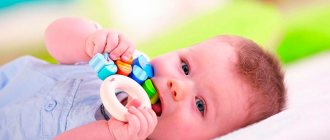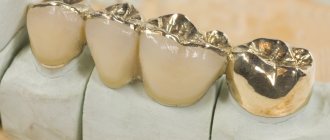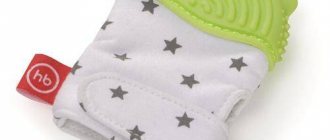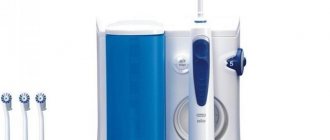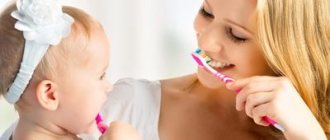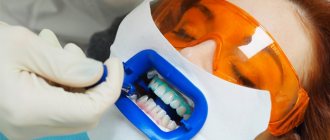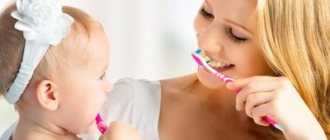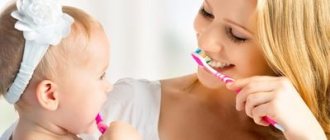When a baby begins to cut teeth, for parents this can be a reason for both joy and sorrow: the baby is capricious, teeth breaking through the gum tissue cause itching, pain and all sorts of discomfort. Special rodents are produced for erupting and growing teeth. Which are called teethers.
What is a teether?
Today, all children's goods stores offer thousands of various baby accessories. Modern mothers sometimes find it difficult to weed out unnecessary junk from truly useful things. A teether is a special toy that can eliminate pain when a baby gets his first teeth.
Its main purpose is to massage the gums. Since this item is constantly in the baby’s mouth, teethers are made from safe materials. They come in different shapes, depending on which teeth the child is cutting.
The appearance of baby teeth
A child's first teeth appear at 4-5 months of age. The baby becomes whiny, capricious, begins to refuse food, and sleeps restlessly. The process of teething is accompanied by severe pain, itching, fever and inflammatory damage to the gum tissue.
In order to improve the general condition of the baby during this period and significantly reduce the discomfort he experiences, a special orthopedic device is used - a teether.
At what age should you buy a baby teether?
As a rule, age restrictions are not indicated on teethers. This is because the development of a baby is a purely individual matter. For some, the first teeth appear at three months of age, for others closer to a year. And that's absolutely normal.
Due to their constant worries, parents prefer to purchase baby supplies in advance. Although in our case this is not particularly urgent. The fact is that babies tolerate pain differently. If a child is active, has a good mood and appetite, then he does not need outside intervention. Otherwise, a baby's teether is an integral part in the process of the appearance of the first teeth. Therefore, try to navigate your baby’s mood.
Selection rules
The choice of teether largely depends on individual preferences in color, material and design of the product. However, in addition to personal preferences, a number of criteria should be taken into account when purchasing.
- Child's age. For very small children, it is recommended to use simple models that are comfortable to hold in your hand. After 6 months, the baby may be interested in products with side elements or oval shapes, which are convenient for scratching the dock incisors.
- Material. Preference is given to materials that are easy to maintain and safe for children.
- Internal filling. The chewer may contain internal filling to cool inflamed tissues. Such models should be treated with more care; care must be taken to ensure that the child does not chew through the material.
- Appearance. Teethers should not have small parts or elements that are not securely fastened or may break off. Preference is given to bright models with a round or oval shape, without sharp corners.
Size. When choosing a teether, you need to select a size so that it does not fit completely in the mouth.
Before use, a new accessory should be carefully examined for integrity and washed. Only after this can the rodent be given to the child.
Types of teethers
To give preference to a particular teether model, you need to familiarize yourself with the entire range. As already mentioned, teethers are made of safe materials: silicone, plastic or wood. The most environmentally friendly items are those made from wood (juniper, beech or maple). They can be purchased in the children's goods department or made to order.
Considering that the first teeth, as a rule, are cut in a certain sequence, manufacturers offer parents four possible options for teethers. Based on their purpose, teethers are divided into:
- for upper and lower incisors;
- for canines and first molars;
- for the second pair of molars;
- universal.
As a rule, they are designated by the stages of tooth growth: first, second and third, respectively. All necessary information for parents is printed on the product packaging. Before first use, teethers must be washed and sterilized, regardless of what material they are made of.
Finger brushes
There is a type of teether that a child cannot use on his own. These are silicone or latex brushes with small bristles. They are put on the finger of mom or dad and they scratch their child’s teeth with it. Usually children love this procedure; they find it fun, and at this time parents relieve the baby’s pain and discomfort.
Another advantage of this product is its versatility. After the first teeth appear, this brush can be used for the first hygienic cleansing procedures.
Popular models
A teether is a purely individual thing. The baby may not like one model, but another may become his favorite toy. Therefore, here are the most popular models of teethers that can please your child. These include:
- classic model;
- silicone fingertip;
- teething toy;
- cooling teether;
- with vibration;
- pacifier teether.
Now let's look at each of the models in more detail.
How to properly give chews to babies
The rules are simple:
- always wash the product with warm water and baby soap, remove any remaining product thoroughly, and wipe dry;
- Place the cooling teether in the refrigerator for 30 minutes. It is forbidden to place the device in the freezer: the material may crumble;
- after use, also rinse the ring, flower or polypropylene giraffe;
- Store the product in a clean box, away from batteries. Never heat a rodent in the microwave, boil it, or put it in the dishwasher.
Important! If the paint wears off and pieces of material fall off, throw away the device without regret: there will be no benefit from the damaged product.
Classic and silicone fingertip
Classical. The classic model of teether can be found in any baby store. They are made from soft materials, such as silicone or plastic. They have a fairly simple shape with monochromatic colors. Silicone teethers can be used from an early age - 3-5 months.
Silicone fingertip. This teether is designed to allow parents to massage their baby’s gums on their own. It is placed on the index finger and, using a soft brush, massages the inflamed gum area. Frankly speaking, this is not the best model, since children usually do not like this procedure.
Wooden, silicone or rubber: which teethers to buy
Manufacturers of accessories for children use a wide variety of materials to produce high-quality teethers. The best teethers according to experienced parents:
- silicone teether, which has high rigidity, has no taste or odor and is easy to clean and sterilize;
- wooden teether, characterized by naturalness, environmental safety and durability;
- a soft teether made of rubber or latex (synthetic or natural), characterized not only by its special softness, but also by its flexibility.
Teether toys and cooling models
Teether toy. These are special toys that have a massage element. They can be in the form of a rattle, a book, or a soft toy. The massage part is most often presented in the form of plastic rings or latex figures. This model performs two functions at once: it entertains and relieves pain.
Cooling teether. It has a rubber base filled with distilled water or a safe gel. These models look similar to the classic ones; they can only be distinguished by their weight. At the same time, the cooling teether not only massages the gums, but also relieves pain with the help of cold. Therefore, before use, they should be placed in the main compartment of the refrigerator for a while.
Operating principle
The principle is simple:
- when pressure is applied to the gums, blood circulation improves and pain decreases;
- a silicone, rubberized or polypropylene base gently rubs the areas where teeth will soon erupt;
- the cooling gel inside the ring reduces inflammation and has a mild analgesic effect.
Note! Unlike dental gels and painkillers, which the doctor often prescribes during the period of teething, the rodent does not have a harmful effect on the body. The main thing is to buy a device made of non-toxic, high-quality material.
Unusual options
Teether with vibration. This model deserves special attention. It is interesting because with a light bite, a special mechanism is activated in the toy, which creates vibration for the most intense effect on the gums. The manufacturers' idea was to improve the teether. Reviews regarding this device are positive, as the additional vibration is of particular interest to the baby.
Teether pacifier. From the name you can understand that this model is made in the form of a pacifier. Only instead of the usual nipple, a special relief element is used here that massages the baby’s gums. However, this model, like the pacifiers themselves, is not recommended for children who are breastfed.
Teethers for a specific stage of tooth growth. All of the above models are universal teethers, but there are also narrowly targeted ones. That is, models that are specially designed for a specific pair of teeth (front, back, canines, etc.). They differ in shape and degree of rigidity, for example, the teether for the front teeth is round and soft, and for the back teeth it is elongated and hard. Information about the intended use of a particular product can be found on the packaging.
Teeth cutting? Choosing a teether
le>
To help your baby get through this period easier, offer him a special toy - a teether.
There are many options for how to “scratch” your teeth, but it is difficult to guess which one the baby will like best, because everyone has different tastes and even such tiny children have their own preferences. It often happens that a bright and beautiful branded toy, which the mother liked so much in the store, remained completely unnoticed by the baby. And vice versa, a simple cheap ring from the nearest pharmacy is chewed with a bang for several months. The solution is simple - offer your “toothie” several rodents to choose from. Let these be teethers that differ in shape, texture and rigidity, made from different materials. The baby himself, based on his feelings, will determine what is most suitable for him. Well, to make it easier for parents to navigate all this “biting and chewing” abundance, it’s worth getting to know its assortment better.
Teethers are made from various materials and their combinations: plastic, silicone, latex, textile, wood - all to make it comfortable and pleasant for the little biter to help teething.
Rubber teethers are made entirely of silicone or latex. Elastic - they spring pleasantly when compressed, flexible and elastic - they gently massage the gums. What to choose - latex or silicone? There is no noticeable difference here - as the baby likes it.
Silicone teethers are tighter, have no taste or smell, and are quite resistant to high-temperature treatment: they can be doused with boiling water, and some even allow for hot sterilization (the main thing is to follow the manufacturer’s instructions in this regard). Such teethers are transparent or translucent, often colorless or painted in soothing pastel colors.
Teethers made of latex (natural 1 or synthetic), soft, flexible and elastic, are most often painted in bright colors that attract the child’s attention. There are models made from flavored latex: these are teethers with a light, unobtrusive vanilla scent that lasts for quite a long time, gradually fading away. With a fragrant toy, the baby not only scratches his teeth, but also discovers a new “delicious” aroma and remembers his feelings associated with it. It is recommended to wash latex teethers in warm water with soap or baby dishwashing detergent; cold sterilization is allowed (in sterilizing liquid).
ATTENTION! A new rubber teether may have a slight specific odor, which quickly dissipates and disappears after washing. A strong, pungent “chemical” smell is not allowed!
Teethers are made of plastic, bright and colorful, just for those biters who want to chew on something hard. The smooth surface is safe for a small mouth, and even under the pressure of the most persistent teeth, the plastic parts do not break or crumble. The plastic teether is washed with warm water and can be used for its intended purpose immediately after washing, as it is easily wiped dry with a clean towel.
Wooden teethers are made from environmentally friendly natural material - hardwood (beech, maple, juniper). Their wood is strong and durable, resistant to damage in general and to infant “chewing” in particular. Practice shows that children love to sharpen their teeth on wood (an example of this is the chewed sides of wooden cribs). Therefore, teethers with the natural aroma of a living tree will certainly appeal to the baby.
Wooden chewers are offered in both unpainted and colored versions, coated with safe, saliva- and tooth-resistant paints - water-based and with the addition of harmless food coloring. For greater safety, a special technology of deep staining is used, followed by treating the surface of the wood with beeswax. Even if, over time, marks from the child’s sharp first teeth appear on the teether, deep scratches, flakes and chips of paint do not form on the toy, its surface will still remain intact. Otherwise, you are looking at a toy made of soft wood (birch, linden, pine) that is not intended for teeth. To prevent the baby from injuring its delicate gums and tongue, the damaged toy should be removed immediately.
When purchasing a wooden teether, you must carefully inspect and feel it: it must be thoroughly sanded; unevenness, nicks and cracks are not allowed! It is worth keeping in mind that it is better not to wash wooden teethers, but to wipe them thoroughly with a damp cloth, and then dry them in natural conditions (away from heating devices). If you follow all the manufacturer's recommendations for caring for the teether, it will last a long time, will not deform, and will retain its original appearance, integrity and hygiene.
Textile teethers are bright, colorful, light and pleasant to the touch. They are made from fabrics of various textures, have the gentlest effect on the baby’s delicate and sensitive gums, and are therefore suitable for use even during the most painful teething period. The baby happily chews the textile teether in his mouth, scratching his gums on the softly padded elastic parts made of velvety terry, plush or velor fabric, chewing smooth cotton parts, biting tight knots and feeling with his gums the different-sized granules sewn inside. The fabric absorbs saliva well - the baby's face, hands and clothes remain dry longer. The teethers are easy to wash by hand and in the washing machine; after washing they dry quickly without losing their shape and color. When choosing a teether made of fabric, it is important to evaluate its safety and reliability: the absence of small parts that a child could detach, tear off or bite off, as well as long laces and ropes; durable, weather-resistant upholstery. The textile teether is good for the smallest and still toothless babies. But with the appearance of the first teeth, it is better to replace it with something else: the newly-minted “nibbler” risks biting through the outer tissue and getting to the filler, and this is dangerous.
Often, one teether combines several materials, different in their properties, hardness and texture. For example, a silicone rodent with a plastic handle, plastic or textile toys with rubberized parts, a soft-filled velor ring with thin wooden rings strung on it, etc. The baby not only bites, chews and licks the rodent, choosing for himself the most “delicious” part of it . Manipulating the toy, the baby examines and feels it - this is how in the game he gets acquainted with different concepts, such as soft and hard, big and small, smooth and rough.
How to choose
When choosing a teether, it is important to consider not only what it is made of, but also what it represents.
A classic teether is most often just a rubber, plastic or wooden teether - a ring, which, in turn, can be played out in the form of a figurine of an animal, a fish, a hand with fingers, a flower, an asterisk, a triangle with rounded corners, a figure eight, as well as in the form of beads consisting of multi-colored balls. The classic shape of the ring provides a comfortable grip: the teether fits well in a fragile child’s hand and does not fall out, which means that the baby will be able to manipulate the rodent independently. The ring also works well for its intended purpose: it is convenient to “scratch” both the front and side teeth with it, and by biting it deeper, you can reach the furthest erupting teeth. At the same time, the shape of the ring and its size (diameter 6 - 10 cm) do not allow the toy to be inserted too deep into the mouth, so the baby will not be able to choke. The teethers of this group do not provide any additional “entertainment”. For a baby, this is first and foremost a rodent, which may not be so interesting to play with, but scratching its gums and biting its teeth is very convenient. And for this purpose, the teether provides quite smart solutions.
For gum massage. The relief surface with massage pimples and bumps, curly bulges, rough texture, soft silicone bristles is successfully combined with absolutely smooth parts.
For the first teeth. It is practiced to combine parts of different hardness in one teether: soft ones for a gentle and gentle effect, harder ones for an intense effect. The baby bites and gnaws on them, creating moderate pressure on the gums, as a result the eruption of new teeth is facilitated and to some extent accelerated. And for those who have already appeared, the toy becomes an excellent simulator: the child learns to control the strength of his bite, besides, the more the baby chews and gnaws, the more he works with his teeth, the stronger they grow.
For pain relief . Some models of teethers are equipped with special channels and cavities for anesthetic dental gels and ointments. Mothers know how difficult it can be to lubricate a baby’s gums with an anesthetic: the baby spins, is capricious, and does not want to open its mouth. And if the gel is applied to the applicator of the teether, then the child, biting the rodent, will not even notice that the medicine in the required dose has already reached his gums and is beginning to act. Gradually the pain goes away, and the baby is in a good mood again.
ATTENTION! To relieve pain and relieve inflammation, you should use only those medications prescribed by the doctor.
Cooling teethers are made of silicone or rubber. Inside, they (entirely or only their individual parts) are filled with distilled drinking water or a special thermogel. Before use, such a rodent should be placed in the refrigerator for 20–30 minutes and given to the child once cooled. The cool surface of the teether, when in contact with inflamed gums, softens pain, reduces swelling and itching, and relieves unpleasant sensations of discomfort: when biting such a rodent, the baby feels relief and calms down faster. However, it is important not to overdo it: the teether should be cooled, but no more. That's why you can't freeze it in the freezer! This is also indicated by the corresponding warning label on the packaging. Indeed, frozen liquid filler will turn the teether into a scalding-cold and hard piece of ice that is not only chewable but also kept cold. Due to low temperatures, the rubberized surface will become hard and may crack and begin to crumble - as a result, the baby runs the risk of frostbite and injuring his delicate gums. Chilled in the refrigerator, the teether will remain soft and safe for use.
As for the filler itself, mothers should not worry: both water and gel are absolutely harmless to the baby. In addition, the rubber (or silicone) shell of the teether is made quite thick and durable, it is impossible to bite through it (of course, if we are talking about a certified product from stores and pharmacies). When choosing between similar models with different fillings, it is worth keeping in mind that water is a little lighter, it is visually noticeable to the baby, it flows interestingly and gurgles when the toy is shaken. But the thermogel cools faster in the refrigerator and stays cool longer.
The teether-rattle, along with its main function, also rattles, rings, rustles, amusing the baby, distracting him from the pain and itching in the gums and turning his attention to himself. This is sometimes enough for the baby to forget about the illness, stop crying and get involved in the game. Textured, chewable elements of teethers (including cooling ones) are found in many rattles - the main thing is that the toy is selected according to the age of the child. And its shape can be very diverse: a cuff on the wrist, a ring, a rattle on the handle or in the form of a dumbbell, a soft animal toy, etc.
The assortment of many brands includes a teether-rattle in the form of a bunch of keys - this form of toy is interesting and children like it. In addition to keys, other figures can be collected on the ring, united by a common theme, for example, fruits, vegetables, flowers, cars, geometric shapes, animals, etc. When a child shakes a rattle, the figures, hitting each other, rattle and jingle. Over time, the baby will learn to sort through these parts, moving them around the ring and feeling each of them: a good warm-up for little fingers. The figures can be of the same type, made of the same material, differing only in color and shape. But it’s much more interesting when “keys” from different materials, different textures and hardness are collected on a bunch: the baby studies various chewing objects, examines them, tries them both to the touch and on the tooth. It is convenient when the keys are removable. While the baby is very small, you can offer him a ring with one figurine, or only a separately removed key: it will still be difficult for him to hold the whole bunch in his hand, so the toy will not be successful with him either as a rattle or as a teether. And only after 6–7 months, when the baby is strong enough and his movements become better coordinated, will he be able to truly appreciate the functionality of the toy.
A pacifier teether is an interesting design solution for little ones. First of all, it is suitable for those “toothies” who are already familiar with the pacifier and love it. It is no secret that during the teething period, babies not only suck the pacifier, but also chew it, which is why it quickly becomes unusable. Especially for such cases, we offer silicone pacifiers with massage bumps on the nipple, on which the baby enjoys massaging his gums and scratching his teeth. However, instead of a pacifier at this time, the child can be given a teether similar to it. Its main advantage is the familiar and familiar form of a pacifier for a baby: with a mouthpiece, a ring for gripping (by the way, it can also be “edible” in a teether) and a working part instead of a pacifier. The shape of the “pacifier” is such that it is unlikely that you will be able to suck such a “pacifier”, but chewing and biting is a pleasure! The corrugated working part of the teether in the form of a pacifier is usually flat - made of latex or silicone, filled with cooling gel or water.
A handkerchief toy (also known as a play napkin or a cuddle toy) is a soft and pleasant to the touch textile toy that can also be used as a teether. If a child constantly tries to put the edge of a blanket, diaper, towel or his clothes into his mouth, offer him an alternative - a special handkerchief. It is made from different fabrics that differ in density, texture and color - while playing, the baby learns and develops his visual perception, tactile sensations, and learns to coordinate the movements of his fingers. A soft-stuffed head of a doll or animal can be sewn into the center of the scarf, or it can simply be tied into a tight knot - the baby must imagine in his imagination what it could be (a good activity for developing imagination and intellect). If the doll’s head has a hole on the inside for a finger, the mother will be able to put a handkerchief on her hand and the doll will “come to life” in front of the baby’s eyes. For greater functionality, a rubberized teether, rattle or rustle is sewn to the napkin. But even if there are no such additions, the baby will happily fiddle with the handkerchief in his hands (after all, this toy is so easy to grab!), play with it in his mouth, gently scratching his gums. The handkerchief can be placed in the refrigerator after slightly moistening it with water - a damp and cool cloth applied to the gums will reduce pain and swelling.
A bib with a teether will be a good help for both the baby and his mother during the teething period. Excessive drooling that accompanies the appearance of teeth leads to the fact that the child’s hands, face and clothes are constantly wet. As a result, irritation often appears on the skin around the mouth and on the neck, the mother has to change the baby’s clothes more often (and babies don’t like this), laundry and unnecessary hassle are added, which can easily be reduced by using a bib. Moreover, it is more convenient to have a bib with a teether sewn into the edge - a rubber figure and/or a plastic ring, or just a corner. The rodent is securely attached to the bib - it will not come off, nor will it fall and will always remain at the child’s fingertips. As saliva flows down, it is absorbed into the soft tissue - your mouth and clothes will be noticeably drier and cleaner. Moreover, bibs with a waterproof lining cope with their task much more effectively than conventional cotton bibs.
ATTENTION! To avoid damaging your teether, use a low-temperature wash cycle for the bib in accordance with the manufacturer's recommendations.
Toothbrush massagers
With the help of massage toothbrushes for little ones, a mother can help her child relieve discomfort in the gums, and at the same time brush the small first teeth that have just appeared.
The thimble brush is made of soft silicone in a fingertip shape with short, super-soft silicone bristles, each of which is rounded and tapered for added safety. Some brushes have two working surfaces: on one side there are bristles, on the opposite side there are silicone massage bumps. The mother places the brush on her finger and, with careful touches, gently massages the baby’s gums, while at the same time cleaning his teeth. The brush, placed on your finger, allows you to easily control the pressure and depth of insertion.
Disposable wet wipes for oral care also operate on the same “finger” principle. The wipes are impregnated with an antibacterial composition, the active component of which is xylitol, and have a textured surface for more effective removal of plaque from teeth and a gentle massage of the child’s gums. To relieve pain during teething of the baby’s gums, it is recommended to massage with napkins previously cooled in the refrigerator.
The brush-massager on the handle has a small rubberized cleaning head of a special shape - with silicone bristles, with soft-elastic rubber bumps and protrusions. The brush set may come with a removable limiter ring - it fits onto the handle of the brush and prevents it from penetrating deeply into the child’s mouth.
ATTENTION! The thimble brush and massage brushes are intended for adult use only. Don't let kids play with them.
Individual approach
Teething is a natural and individual process. As a rule, children's first teeth appear around six months. However, not all kids strictly adhere to these deadlines. Some people please their parents with their first tooth as early as 4–5 months, while others begin to acquire teeth only closer to 1 year. It is worth keeping in mind that teething can be quite lengthy: sometimes about 1.5–2 months pass from the beginning of gum swelling to the appearance of the first tooth. Consequently, a teether may be needed as early as 2–3 months, and for some children even earlier. That's why you need to choose a rodent according to the age of the child.
For babies 3–6 months old, the smallest and lightest teethers are suitable, providing a soft, gentle effect on tiny gums. “Empty” latex?/?silicone rings in all their variety, light plastic, wooden and textile teething rattles, chewers on the handle, including models with cooling elements, rattle bracelets, toys-handkerchiefs, etc. are suitable.
For children older than 6 months, the choice is much wider. These can be larger toys and rattles that can be held with both hands, vibration teethers, key rings, etc. As teeth appear, soft rubber and textile teethers should be taken out of use so that the child cannot bite through them.
There are teethers that manufacturers divide not only by age, but also by the stage of teething. The ergonomic shape of the teethers is specially designed in such a way that it is convenient for the baby to use them at different stages of this process:
Stage 1 – teething for the first front teeth (from about 4–6 months). A comfortable surface for shallow gripping, chewing and biting with the front teeth.
Stage 2 – begins to be used when the first signs of eruption of the lateral teeth appear (from about 6–8 months). Its shape is designed for a wider mouth, and there are special raised ridges with an emphasis on the side teeth.
Stage 3 – used for the eruption of back teeth (from about 12–18 months). The shape of the rodent allows the baby to easily reach his outermost molars.
The transition from one stage of development to another for each child is, of course, individual and rather conditional. The mother herself will determine by the behavior of her baby, by his well-being and by the intensity of teething when it is necessary to replace the rodent with a more suitable one.
Meet Nibbler!
Of course, this is not a teether as such, however, the baby will certainly like it in this capacity and will come in handy in the mother’s household. The nibbler is a mesh bag attached to a handle. The mother can put a piece of chilled apple, pear or banana in the net for the baby; a special fastener securely closes the net - the child will not be able to open it and get to the contents. The large rubberized handle makes it easy for even the smallest to hold the nibbler - now the child can not only scratch their teeth and gums on the net with the fruit, but also taste its taste, without the risk of biting off a piece and choking on it. With a nibbler, the baby learns to chew and bite solid food and makes his first (and successful) attempts to eat on his own.
ATTENTION! Use fruits, vegetables and berries in accordance with the child's age. Check the mesh regularly; if damaged, it must be replaced immediately.
Teething is not necessarily associated with illness - a baby can go through this stage of growing up almost painlessly and unnoticed by himself and his parents. In this case, a couple of different-sized rodents will be enough for him.
Of course, the most important thing for a child remains the love and care of his mother, who will certainly help the baby cope with pain and negative emotions, console and reassure him, rejoicing at his reciprocal and no longer toothless smile. Happy new tooth, baby!
What you should pay attention to
In order not to get lost in the wide range of teethers, follow the basic rules for choosing this accessory. Recommendations for purchasing a teether contain the following points:
- Child's age. For children aged 3-4 months, you need to choose a teether made of the softest material.
- Teether shape. As already mentioned, the stage of teething affects the shape of the “chew”.
- Material. Since this little thing will always be in the baby’s mouth, it must be made of safe materials. Therefore, if the teether has an unpleasant odor, the paint is scuffed, or you simply intuitively doubt its quality, then it is better to abandon this model.
- Appearance. Babies are always attracted to bright colors. If the teether is pale and inconspicuous, it may not be able to attract the baby's attention.
- Filling. A cooling teether has a pain-relieving effect, but there is always a risk that the child will bite through it. Therefore, only water (sea or distilled) or a special safe gel should be used as a filler.
Guided by these simple rules, parents will be able to choose not only a useful item, but also one that is as safe as possible for their beloved child.
TOP 10 most popular teethers
Canpol Babies Teether Rattle
This product consists of a combination of plastic and silicone. The rattle has the shape of a ring, which is convenient for the baby to hold. Hollow, transparent plastic inserts inside contain colorful balls that are fun to watch. They also create a pleasant sound. Silicone inserts have different colors and relief elements that create a massage effect. The ring is fitted with silicone rings of different shapes and colors, and also have different surfaces.
This product is suitable for children from 3 months. Kids can finger them in their hands, developing fine motor skills. This “rodent” is the best value for money. The cost of such a teether is 320 rubles.
Teether-rattle Canpol Babies Multi-colored rings 2/450
Rattle-teether Pigeon
The “rodent” from the Japanese manufacturer has a simple shape and laconic design. It has a very modest size and light weight, so it is suitable for children from 3 months of age. The teether consists of a handle, inside of which small balls roll, making a sound. A flat silicone part with a relief surface is attached to the handle. This “rodent” has no unnecessary parts. The price is 350 rubles.
Teether-rattle Pigeon R-1
Giraffe Sophie Vulli
The world-famous giraffe is produced in France. This toy is created by hand from natural, high-quality, environmentally friendly and safe rubber. The giraffe is light and very pleasant to the touch. The manufacturer tried to create a material that would imitate the mother's skin.
From the first days of life, the baby can hold a toy in his hands, feeling more comfortable. After 3 months he can use the giraffe as a “chewer”. You must be careful when purchasing, because there is a high probability of encountering a fake. The price is quite high and amounts to 1800 - 2200 rubles.
Teether-rattle Vulli Giraffe Sophie 616400
Rattle-teether Tiny Love Flower
This product resembles a small dumbbell. At one end there is a ball that has the function of a rattle, and at the other there is a flower. One layer of the petals has silicone material, which is ideal for the role of a “rodent”, the other layer is rustling, producing a pleasant sound. The thin part is the handle, supplemented with silicone balls that prevent the toy from slipping out of the baby’s hand.
This rattle can be played with your baby from early months. But for independent play, such a “rodent” is suitable for older children, because the rattle is quite heavy. The price is 450 rubles.
Teether-rattle Tiny Love Flower 385
Cooling teether Chicco Cherry
This “rodent” of the Italian brand is an ideal option for children in the first months of life. Inside the silicone cherries there is a special gel that has a cooling effect. But first, you need to keep the teether in the refrigerator for some time. The “rodent” is made of high-quality and safe materials. This product cannot be boiled. To disinfect, the teether must be kept in the freezer for about 2 hours. The price is 320 rubles.
Chicco Fresh Relax teether
Cooling teether Happy baby
This teether has a ring shape that is comfortable to hold and use. This “rodent” is filled with water, thereby ensuring a cooling effect. The advantage of the teether is that the product comes with an additional accessory - a clip that is attached to the baby’s clothes. The price is 200 rubles.
Happy Baby Water teether 2018
Tommee Tippee teether
This product is ideal for distant teeth due to its oval shape. Despite this, it can also be used by children in the first months of life. It is also suitable for teething front teeth. This product can be processed in a sterilizer, as well as by boiling. The price may seem a little high to some, as it is 450 rubles.
Tommee Tippee Teether Medium Teeth
Pigeon teether toy
Interesting design and shape will interest any child. The product is made in the shape of a flower, the petals of which can be chewed. Silicone, durable material can retain its original appearance for a long time. This product is suitable from 4 months. The toy has a stand.
This product is suitable for the sterilization process. It can also be cooled in the refrigerator for better effect.
The price is 450 rubles.
Teether Pigeon Educational 4+ months. 13069
Teether pacifier Dr. Brown's
This special pacifier can be used from 3 months of age. The product consists of durable, hypoallergenic, environmentally friendly silicone. The corrugated surface of the nipple has a massage effect. This product is best used for children who are used to pacifiers. The teething pacifier has a ring with which the “rodent” can be attached to the baby’s clothes. The nipple tolerates boiling well.
The price is 380 rubles.
Teether Dr. Brown's Orthees transitional
Philips Avent teether Elephant
The elephant shape will appeal to many children. The product is made of heat-resistant, highly environmentally friendly, safe material. The teether has a hole that is very convenient for the baby to hold on to. The product also weighs little, which is suitable for the smallest children. The price is quite high and amounts to 550 rubles.
Philips AVENT Teether Elephant SCF199/00
The best teethers for teeth
Many manufacturers of baby supplies have not ignored the problem of teething in babies. Such well-known brands as Tommy Tippy, Avent, Nuk produce dozens of popular models. Therefore, we will try to highlight the best of them.
Avent is a real giant in the field of children's accessories. for all stages of teething. In appearance they look very modest, even boring. But the main task of the manufacturer is to create an effective teether that can help the baby cope with pain. Therefore, absolutely all “rodents” of the Avent brand are safe, they are comfortable to hold, and they massage the gums even in hard-to-reach places. By purchasing any model of the Avent teether, parents make the right choice. But there is also a drawback - the high cost of production.
Another well-known brand is Playgro. The toys they produce are popular all over the world. Moreover, they specialize not only in toys, but also in children's teethers. The most popular are Playgro soft books. Toys do more than just entertain your baby. With the help of special elements, they give him the opportunity to scratch the inflamed area of the gums.
offers caring mothers a wide range of models. The pacifier teether with a special recess for applying anesthetic gel deserves special attention. Experienced parents will confirm that it is very difficult to apply and rub the gel over the entire gum of a capricious baby. solved this problem with the help of her unique teether.
How are Rodents useful for children?
— rodent
distracts the child's attention and relieves anxiety - the teether develops tactile sensations, fine motor skills, color perception and gives knowledge about the world around him. — forms the correct bite, prepares the baby for the chewing process.
Interesting materials:
What kind of ballet flats are in fashion now? What kind of pants do you wear under sneakers? What are the symptoms of chronic tonsillitis? What are the symptoms of Premenopause? What are the symptoms of esophagitis? What are the symptoms of stones in the bile ducts? What are the symptoms of a uterine tumor? What are the symptoms of nasal polyps? What are the symptoms of inflammation of the esophagus? What symptoms occur with hypothyroidism?
What material is it made from?
Children's toys and accessories are often made from quite unusual materials. First of all, you need to choose products that are safe for your child’s health. These teethers include:
- Silicone is one of the hardest, without a characteristic taste or smell. They are easy to clean and can be sterilized.
- Rubber or latex are quite soft and easy to use and care for.
- Wooden ones are absolutely safe, environmentally friendly and durable. At the same time, these are the toughest teethers, so parents buy such samples quite rarely.
IMPORTANT
Ask the seller for a quality certificate for the product when purchasing. All children's accessories must be high-quality and genuine copies of the manufacturers.
conclusions
Quite often, teethers or bright toys with biting parts are given to children by relatives and friends at birth. In search of the best gift for a newborn, guests buy the most fashionable, but not always safe. Therefore, parents should reconsider gifts and protect their child from certain items.
Avoid using teethers with small or fragile parts that could break. Also, do not give your baby rodents with traces of paint. It is better to choose a small, convenient product from a familiar brand rather than a bright, age-inappropriate toy that will easily scare a baby. Then both parents and baby will be happy and healthy.
Is it possible to replace the teether with fruits or vegetables?
Many grandmothers often give advice to young parents about how they helped their children teething in the past. Considering that special devices did not exist before, they used improvised means. Bagels, apples or carrots were most often used. But is it safe?
Considering that food products can crumble, they should absolutely not be given to relieve discomfort to children who already have teeth. But even if the baby just scratches his gums on an apple or carrot, this can also be dangerous for him. When sucking on a fruit or vegetable, juice is released. Even if in small quantities, sometimes this can cause allergies. This is especially dangerous for children under six months, because complementary feeding is introduced only at 6 months (until this time, it is advisable for the child to receive only breast milk or formula and water). It is better to understand and choose which teether is best for teeth made of artificial materials and use it.
Pros and cons of use
Of course, every mother wants to buy the best for her child. Choosing a teether is no exception - before purchasing, women try to take into account all the pros and cons of a particular product.
The advantages of various rodents include:
- reduction of whims, stress and irritability in the child;
- relieving pain and itching;
- development of fine motor skills and coordination.
If the teether has flaws, it means it is not made well or is not selected correctly. There can be no other options. After all, the rigidity of a wooden product is compensated by the pleasant and healthy smell of juniper. The cooling, but not entirely safe, gel inside the teether can get into the baby’s mouth only if the seam on the product is poorly made. Therefore, you should not buy children's products secondhand or on the market, where there are no correct storage conditions and documents confirming the quality.
